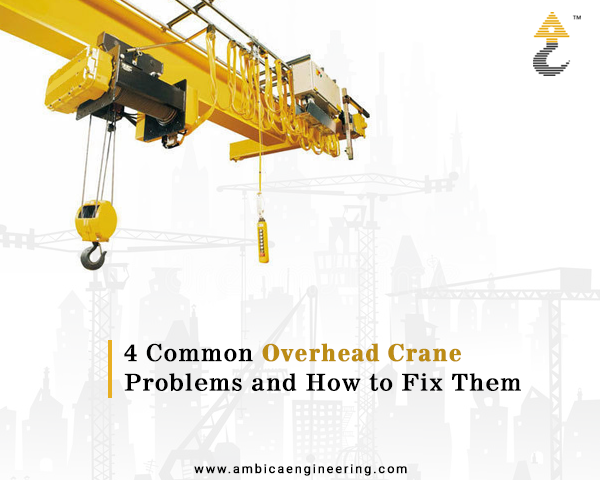Ask any of the crane manufacturers in India and they will tell you the significance of timely maintenance of cranes. Not only it is important for longer equipment life and operational efficiency but crane maintenance is also very important for safety. Moreover, you have invested a hefty amount in crane and so you would want to make it worth it by timely maintenance so that you could ensure long life and higher productivity.
As crane manufacturer who assembles EOT cranes and other crane types in-house, we have registered some common problems that you might encounter during the lifecycle of your overhead crane. Let’s get down to each of them and understand how to mitigate the issues.
1. Degradation or Damage of Wire Rope
Damage to the wire rope is a very common problem and the reasons for the same could be any. Corrosion of outside wires, worn-out outside wires, wire rope jumping off the reeving system, reduction of rope diameter due to loss of support or internal/external corrosion, etc. are some of the reasons for the degradation/damage of wire rope. Moreover, stressful operating conditions can also affect the life of wire rope. How long the wire rope can stay in service depends on a myriad of factors.
So, the best way advised is to prevent the failure or damage by inspecting the wire rope before each load shift. If you see any evidence of damage, the wire rope should be immediately disposed. Also, proper lubrication of the wire rope could prevent the damage to a great extent.
2. Crane Skew and Alignment
An overhead crane that is skewing as it is out of proper alignment can cause significant damage and stresses to the entire system. These stresses could result in crane failure or crane derailment, leaser productivity, equipment downtime, accidents, and cost expensive repairs.
There are some signs that you may see as evidence when your crane is not aligned properly as it moves down for the shift.
- Extensively worn-out wheel bearings, wheel, and wheel flanges
- Loud sounds
- Requirement of extra power to move crane through certain areas
- Wheel climbing or floating over the air and then crashing down
The best way to prevent this is to have your crane inspected on a timely basis by a reputable service provider. They can identify issues before it turns into a bigger problem. Also, they could ensure that your EOT crane that is functioning is in compliance with the CMAA standards for allowable tolerances.
3. Fault in Electrification System
There are a myriad of issues that could occur with the electrification system of the crane that may require immediate or in near future maintenance. Issues with contact interruptions, radio controls, pendant controls, and blown fuses are just some to name. These issues could create major problems that could compromise the productivity, efficiency, safety, or damage any of the other important components of your crane system.
Timely inspection and repair of each of these components is the key. It is difficult to imagine a situation where the control fails and the loads fall off. So, it is better to take preventive measures to avoid greater issues in the future.
4. Damaged or Bent Hooks
A hook holds the load in a precise and particular direction. When the weight cannot be properly supported, it disturbs the internal integrity of the hook and there are chances of cracking and bending of hooks which could result in an accident.
Inspecting the hooks and other rigging hardware regularly becomes inevitable. You need to keep checking for the deformities and damage with any of the hardware to avoid the worst nightmare of the load falling off.

